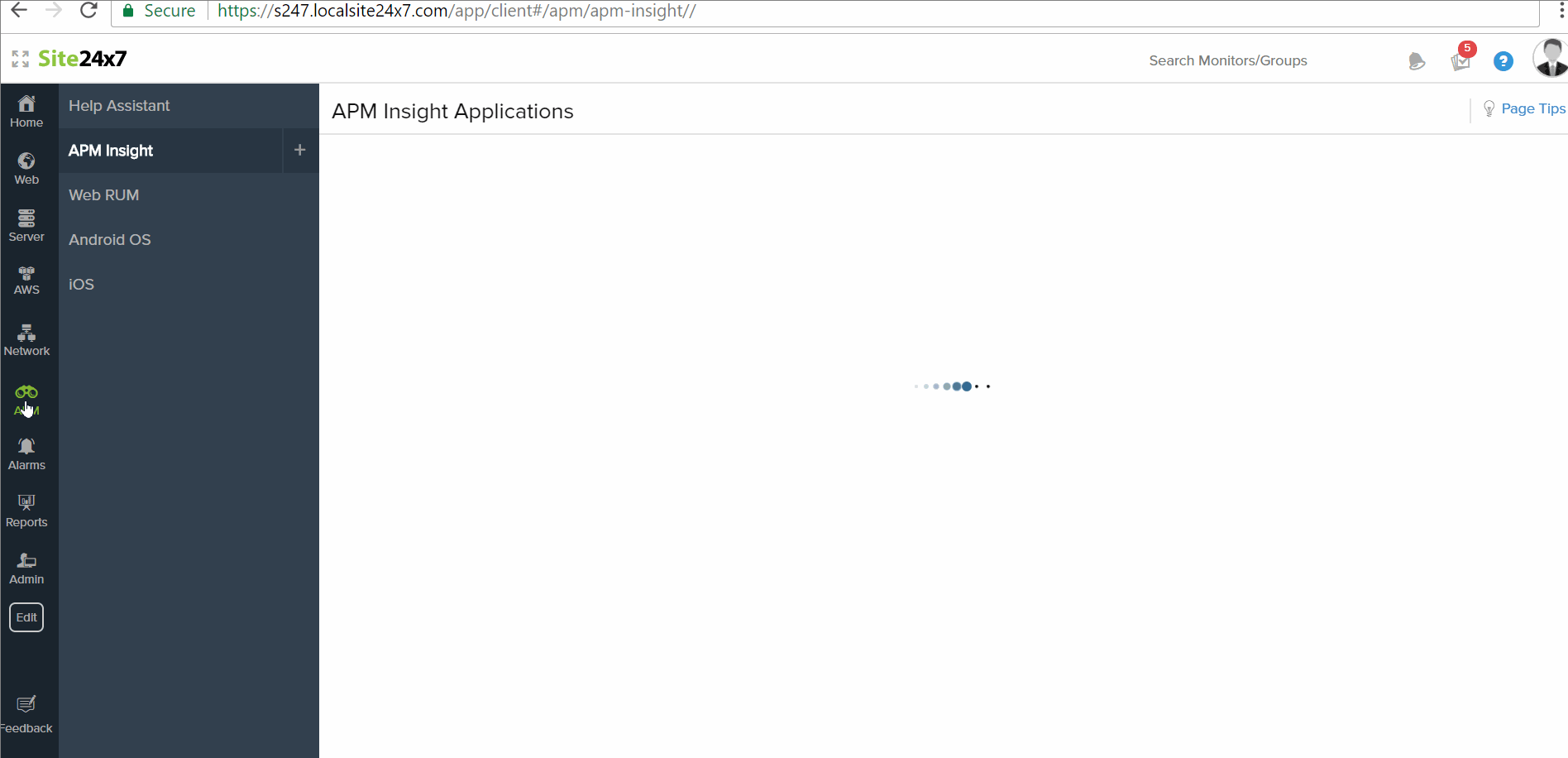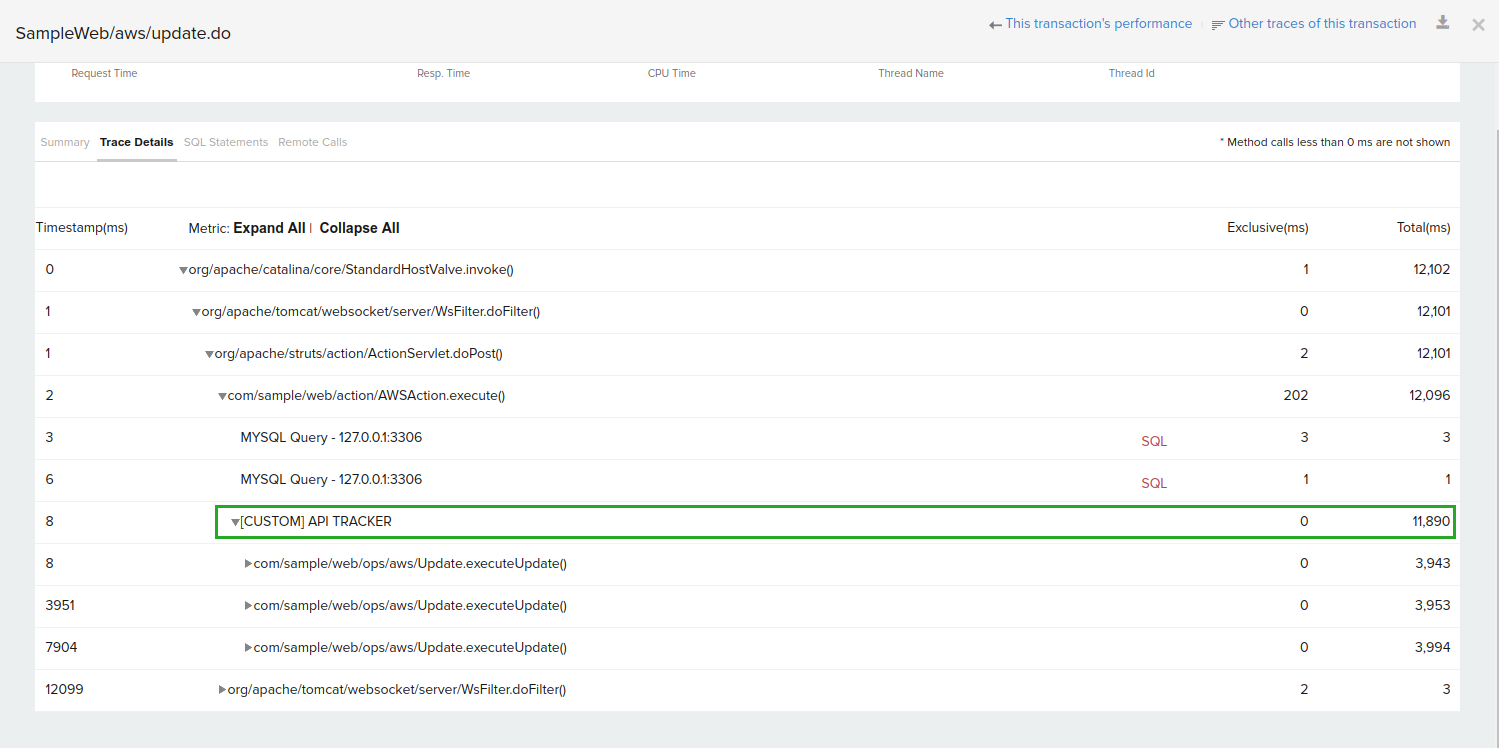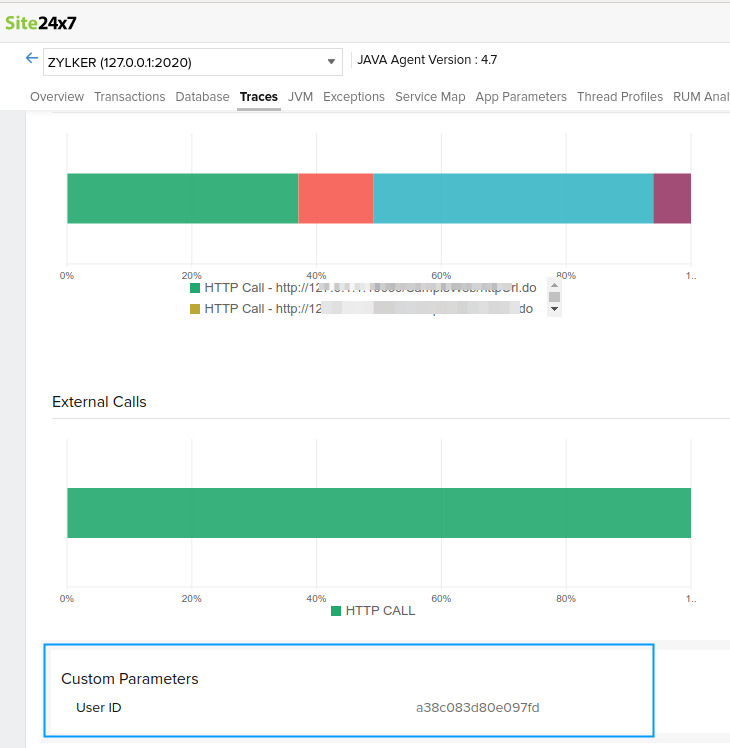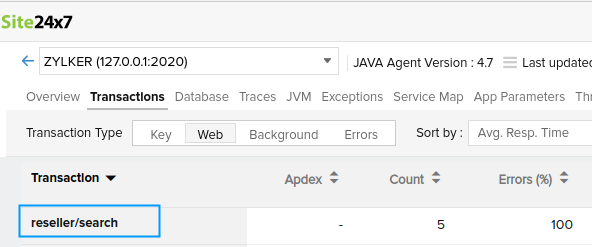Monitoring with Java Agent API
In general, APM Insight Java Agent monitors commonly used frameworks and libraries.
With Java Agent API, you can track custom metrics to monitor parameters that are specific to your application. This helps in contextual debugging.
The Java Agent API allows you to annotate methods that are to be monitored. Additionally, you can provide a custom name for your methods and components to make it easier to identify and troubleshoot them.
Requirements:
Before monitoring via the Java Agent API, make sure the following requirements are met:
- You're running Java version 1.6 and above.
- You've downloaded the API JAR (Java ARchieved) file (apminsight-javaagent-api.jar), which is bundled with the Java Agent zip file. (You can download the Java Agent from your Site24x7 account.)
- The API Jar file is available in your application's build path and bundled with your application (preferred location: WEB-INF/lib).
- Maven users , to add Java agent API artifact as dependency to your projects, please follow the instructions mentioned here
Usage:
You can use Java Agent API
- In Custom Instrumentation
- To track Exceptions
- To monitor block of code
- To add custom parameters to trace
- To customize transaction name
1. Custom Instrumentation using the Java Agent API:
Apart form default classes and methods defined in the application framework, you can monitor your own application specific methods and classes using custom instrumentation.
Custom instrumentation can be done either via the Java Agent API or by using the configuration file.
The Java Agent API provides you with annotations to instrument your methods and classes.
2. Track exceptions using Java Agent API (version 3.5):
Although you can track exceptions with the help of the agent, the Java Agent API provides more visibility and customized options for monitoring/debugging purposes.
Normally, the agent captures exceptions that have been logged or uncaught. In most cases, developers tend to catch exceptions and handle them within the code without propagating them. These kind of exceptions can be tracked using this API. With the Java Agent API, you can provide a custom message and actual throwable exception object and track exceptions when they occur.
You can add the API in your application code to provide an error message and an exception. This is then tracked by the agent and associated with its respective transaction.
You can view these exceptions under the Exceptions tab of APM Insight.
Syntax:
CustomTracker.trackException(String message, Throwable throwable)
CustomTracker.trackException(Throwable throwable)
Sample Input:

Sample Output:

3. Monitor a block of code:
You can also use the Java Agent API to monitor specific blocks of code inside method levels. To monitor a block of code, enclose the block of code within the new object of the CustomTracker and stop method.
You can associate a name, component, and exception with the block. As of now, names only support spaces, hyphens, underscores, and alphanumeric characters. Block names can be up to 64 characters long, while component names are limited to 32 characters.
Creating a new CustomTracker object marks the start point of the block to be monitored; the end of the block is marked using the <trackerObj>.stop() method. If there are any exceptions in the block, the exception object can be passed to the stop method; this automatically associates the exception to the corresponding block and its transaction.
Syntax:
CustomTracker tracker = new CustomTracker("block__name");
CustomTracker tracker = new CustomTracker("block_name", "component_name");
tracker.stop();
tracker.stop(exceptionObj);
Example:
CustomTracker tracker = new CustomTracker("operation_"+opId);
try {
// some operations
tracker.stop();
}
catch (NumberFormatException nfe) {
tracker.stop(nfe);
// some rescue operations
}
Sample Output:

4.Add custom paramters to trace
To give contextual meaning to traces, you can add additional parameters which can help you identify the context of the transaction trace.
Contextual metrics can be anything, a session id, user id or certain method parameters which can help you identify the specific information about a transaction trace.
You can add a maximum of 10 parameters to a transaction trace, these parameters can be viewed under Trace Summary
To add a custom parameter, follow the syntax given below:
Syntax:
CustomTracker.addParameter("key", value);
Key - Name of the parameter
Value - Parameter of the value. It can be of any type, internally agent converts them to string using Object.toString()
Example:
import com.manageengine.apminsight.agent.api.CustomTracker;
....
{
....
CustomTracker.addParameter("User ID", user_id);
....
}
Output:

5. Customize transaction name
If you like to define a unique name for a transaction for easy tracking and identification, you can use our agent API.
Syntax
CustomTracker.setTransactionName("name");
name - desired name for the transaction
Example:
import com.manageengine.apminsight.agent.api.CustomTracker;
....
{
....
CustomTracker.setTransactionName("reseller/search");
....
}
Output:

